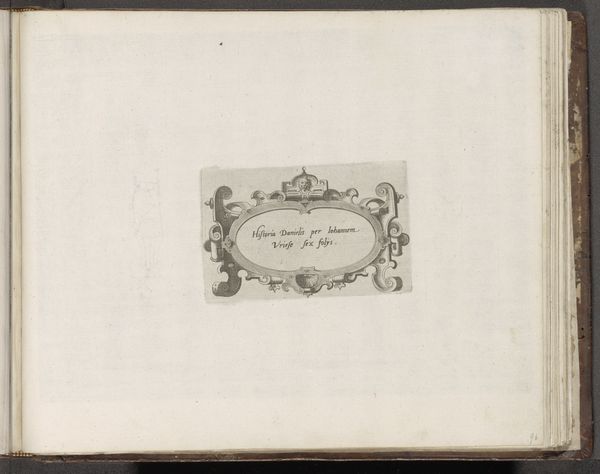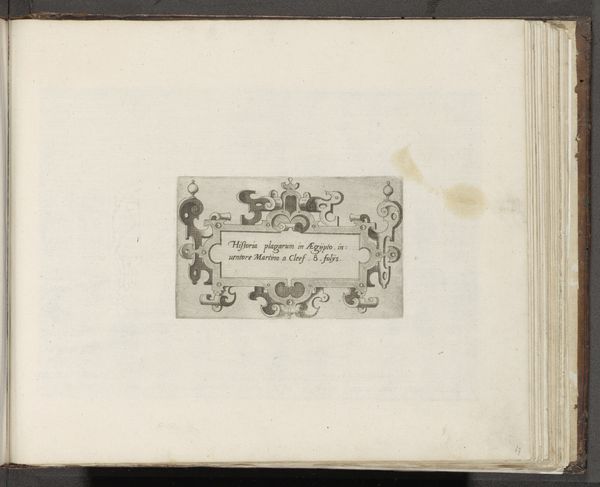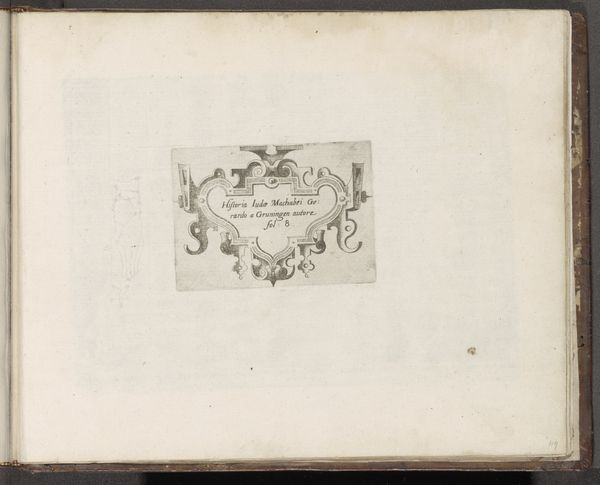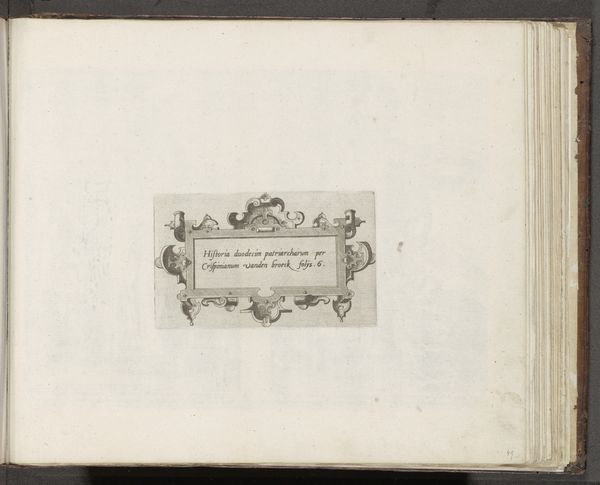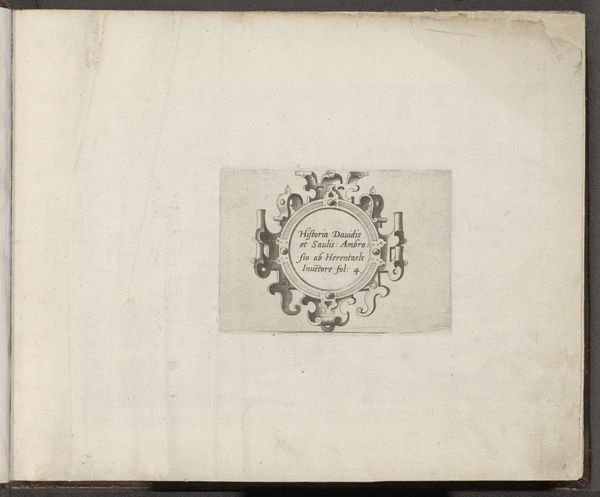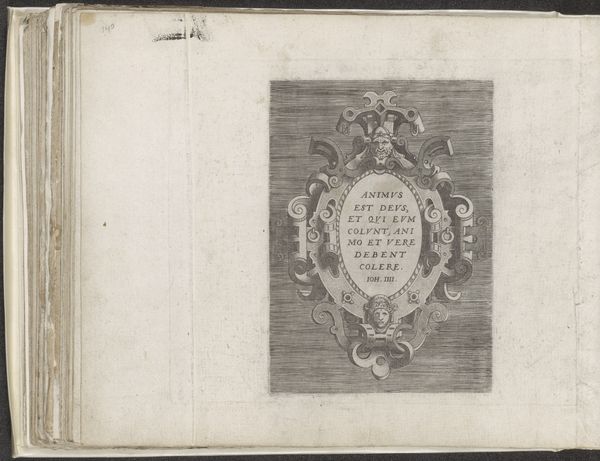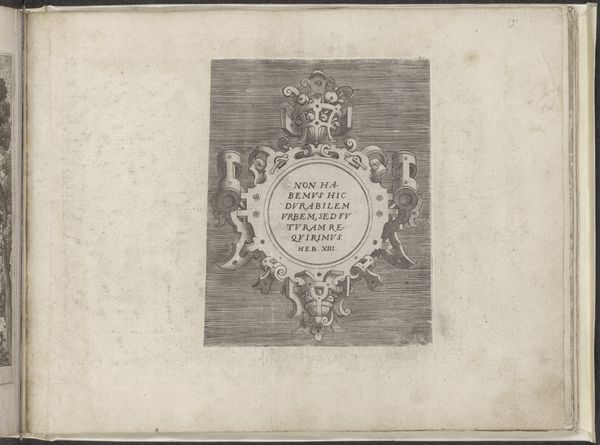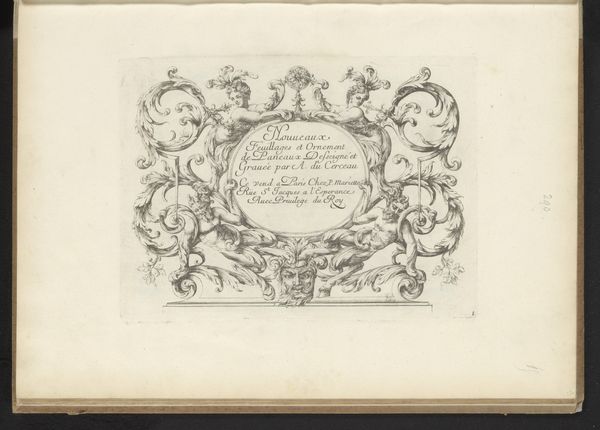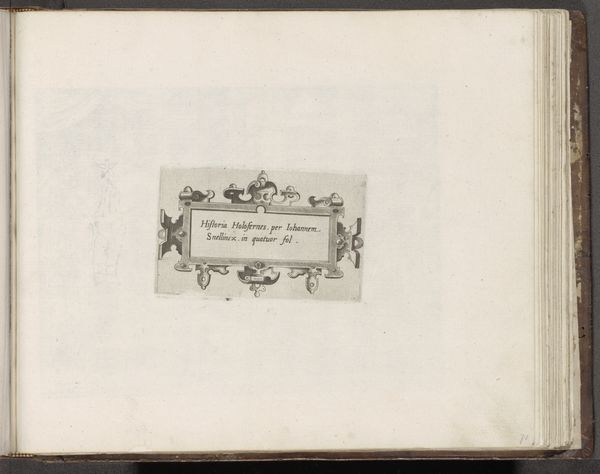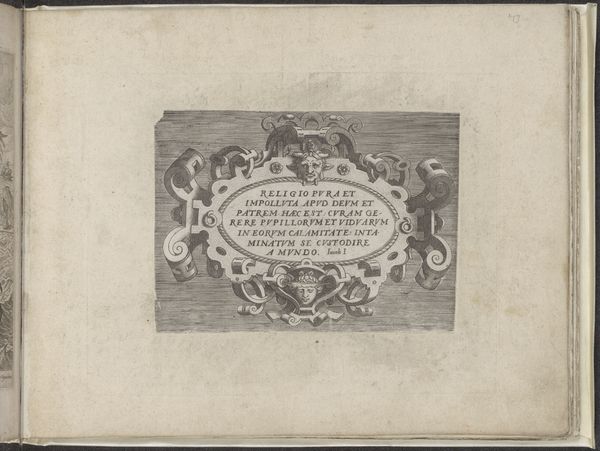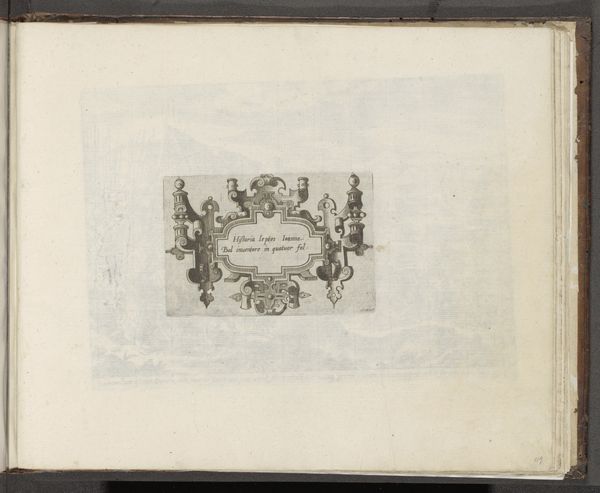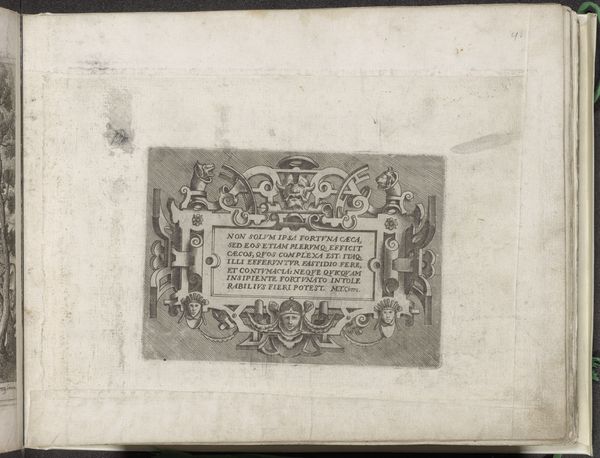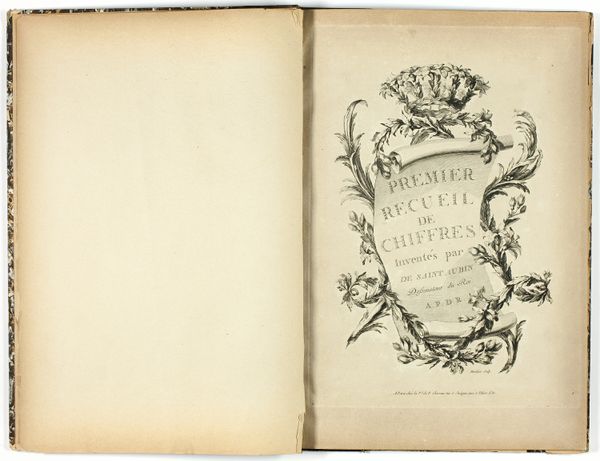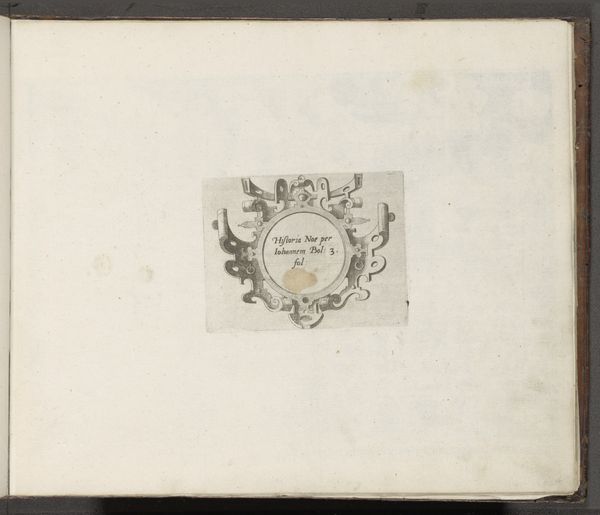
drawing, paper, ink, engraving
#
drawing
#
allegory
#
paper
#
form
#
11_renaissance
#
ink
#
coloured pencil
#
geometric
#
line
#
northern-renaissance
#
engraving
Dimensions: height 96 mm, width 145 mm
Copyright: Rijks Museum: Open Domain
Curator: Welcome! We're now looking at a drawing from 1579 called "Cartouche met rolwerk," currently held here at the Rijksmuseum. The artist, unfortunately, is listed as Anonymous. It's an ink drawing on paper, with some engraving. Editor: Oh, intriguing! My first thought is it has a sort of quiet formality. Very precise, neat lines. And... oh dear, is it meant to be uplifting? It feels almost… constricting. Curator: That tension between precision and, as you say, constriction, is central to its purpose. Cartouches like these, popular during the Renaissance, weren't merely decorative. They were frameworks—symbolic containers. What fills them dictates the image's broader meaning. Editor: A container for… stories, ideas, anxieties, maybe? It's almost as if they’re pinning something down with that rigid form. Curator: Precisely. In this era, cartouches were visual punctuation marks, directing the viewer's interpretation. Think of them as little prosceniums. Also, look closely at the elements swirling around the central frame—the *rolwerk*, or "rolled work." Those abstract shapes evoke organic forms… suggesting nature held in check. Editor: It feels incredibly controlled, doesn’t it? That delicate balance between the organic suggestion of forms, the natural world struggling to burst free… and this architectural, man-made restraint holding it all together. Like a promise barely kept. What statement are you implying? Curator: The absence of a central image within this cartouche grants it tremendous versatility in use. One interpretation lies in the rising Humanist ideas that prized precision and order as a way to improve the understanding of the natural order, especially of religious scriptures. Editor: So, order itself becomes a message. That period really loved its visual puzzles. The idea that beauty could contain complex thought processes fascinates me. The engraving provides an even crispness, almost a clinical perspective... And I am certain each element represents so much more than its physical shape alone. I suppose the question this artwork is now rising within my perspective is what do I fill the artwork with, in turn giving meaning to the piece, and providing what could be. Curator: An excellent observation and a testament to the image's continued relevance, even with so much unknown of its creation, the ideas of order and meaning within form still pervades. It really emphasizes the layers of understanding possible within an older artform such as this piece. Editor: A lovely chance to wander through time! A structured walk I will admit, but it brought so many questions to my understanding and interpretation of images. Thank you.
Comments
No comments
Be the first to comment and join the conversation on the ultimate creative platform.
